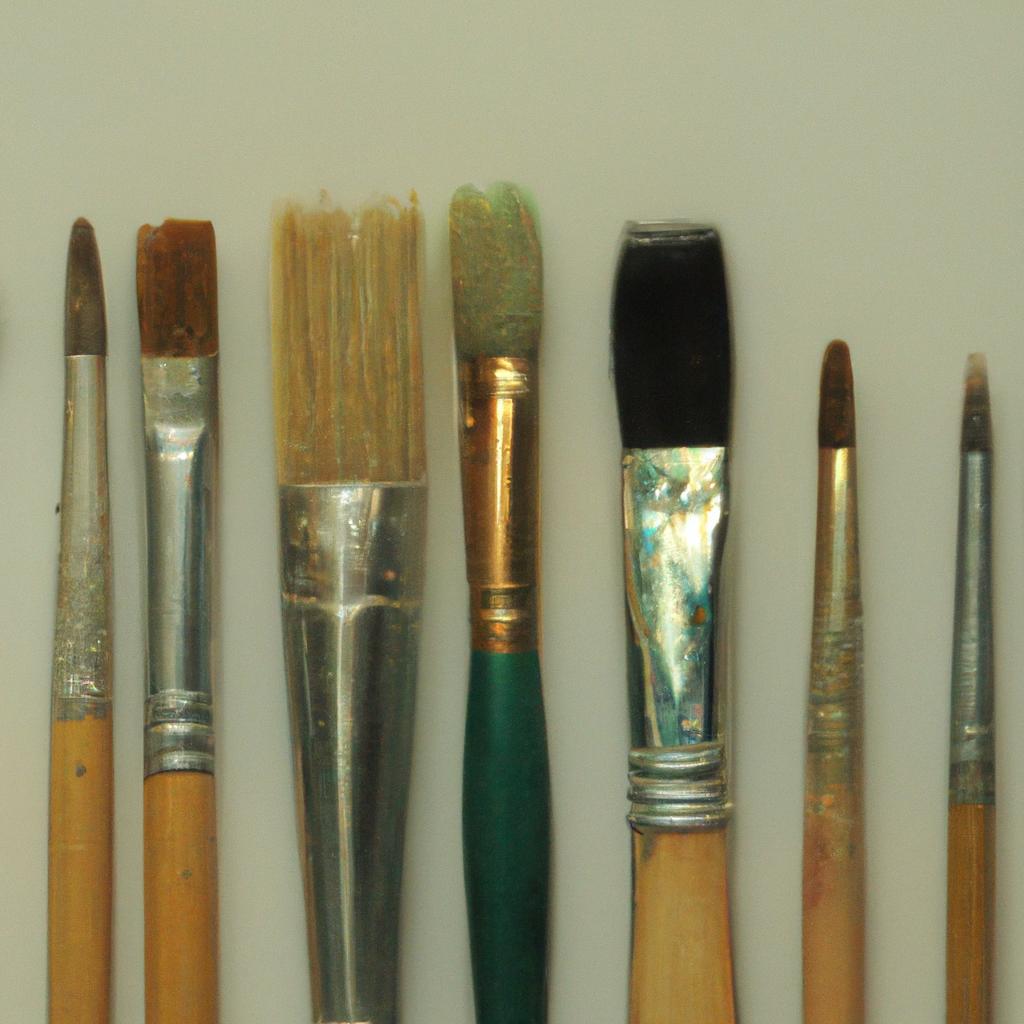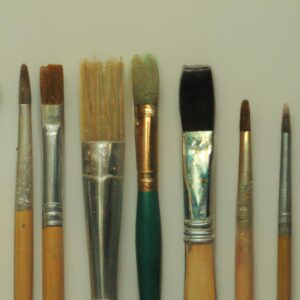Exploring Different Brushwork Techniques in Painting
Creating beautiful artwork with paint can be a daunting task for anyone. You may find yourself overwhelmed by the sheer number of techniques available and find it difficult to decide what to use. This guide is designed to help you explore and learn the different brushwork techniques used in painting. By understanding these techniques, you will be able to create more dynamic and creative works of art with your brush.
From learning the different types of brushes available to creating unique aesthetic with brushes of different sizes, this guide will provide you with all the information you need to get started in brushwork painting. You’ll learn all about mixing colors, special effects, themed paintings, and finishing touches to make your painting stand out. So, let’s get started and explore the wonderful world of brushwork painting.
Understanding Brushes and Their Uses
Whether you are a beginner or advanced artist, having the right brushes for painting is essential. In this section, we will explain the different types of brushes and their uses so that you can pick the perfect tools for your art.
The most common types of brushes available for painting are round brushes, flat brushes, filbert brushes, fan brushes, and rigger brushes.
- Round Brushes – Round brushes have a tapered tip and hold more paint than other brushes, making them an ideal tool for details and thin lines.
- Flat Brushes – Flat brushes are great for making long strokes and applying broad areas of paint.
- Filbert Brushes – Filbert brushes have a rounded tip and a flat surface on one side, which makes them useful for blending and mixing colors.
- Fan Brushes – Fan brushes are best used for softening harsh edges, blending colors, and adding texture to a painting.
- Rigger Brushes – Rigger brushes are small and have a long, thin handle that is ideal for making precise lines and details.
It is important to choose the correct brush type for the job. Different brush types are better for different tasks and techniques, so make sure you have the right brush for the job.
In painting, the application method used for each brush type can dramatically affect your work’s outcome. There are three main types of brush methods for applying paint: dabbing, stroking, and layering.
Dabbing is the simplest of application methods and works best for when you desire a textured effect. This method involves placing brush strokes in one spot and then gently pressing down on the bristles in smaller movements. This creates a stippled or mottled effect on the canvas.
Stroking is the most common application technique and is also known as ‘swiping’. It requires you to drag the paint across the canvas in larger swipes. This helps create a longer lasting line or image, as it builds up more layers of paint.
Finally, layering is a great way to achieve a gradual build-up of colour, which can help create a seamless transition in a piece of artwork. In this technique, you apply the paint in thin layers until you have achieved the desired result. When layering, it is important to let each layer dry before adding another to ensure the best result.
Variety of Looks with Different Brush Sizes
When it comes to painting, the size of the brush isn’t as important as the skill of the painter. But the size of the brush you use can make a big difference to the overall look of your painting. Different sizes and shapes of brushes produce different effects, from bold and vibrant to subtle and delicate.
Large brushes are ideal for creating large swathes of colour and broad strokes of paint. They are also useful for covering a lot of area quickly and easily. On the other hand, smaller brushes are better suited for detail work and finer lines. This is because they create more precise lines and have more control over the flow of paint.
Using different brush sizes can give your painting a unique and varied aesthetic. Large and small brushes can be used to create dynamic contrast in a painting. For example, a large brush can be used to put down larger areas of colour, while a small brush could be used to add intricate details and accents.
Experimenting with different brush sizes will allow you to create paintings with more depth and texture. Varying the size of the brush can also help to express your artistic vision, enabling you to produce creative and unique pieces of art.
Mixing Colors With Brushes
Painting is an enjoyable activity made much more creative by the variety of brushwork techniques available. One such technique is mixing colors with brushes. Mixing colors can be intimidating, but with the right knowledge and practice, you can create a whole range of shades and tints.
The trick to successful color mixing is to get the right consistency of the paint on the brush and knowing which colors to combine. First, mix two primary colors together (red, blue, and yellow) in the correct proportions. This will produce a variety of secondary colors (green, orange, violet). You can also mix tertiary colors (a mix of primary and secondary colors) for even more nuance. Mixing a small amount of black or white to the base color, or adding tints of one color to another, can also create a wide range of shades.
Using a variety of brush sizes, from thick to thin, will also give your painting a unique look. Make sure to use the right type of brush for the job—Avoid using a thin brush for a thick paint, and vice versa. Experiment and practice with different brush sizes until you get a beautiful, blended result.
Special Effects With Brushes
Painting is an art form which allows for lots of creative exploration. One way to do this is through the special effects you can create with brushes. With the right brush and technique, you can sponging, stippling, and creating textures.
Sponging involves lightly dabbing paint onto a canvas or other surface using a damp sponge. Painting techniques that require texture such as sponging are used to create unique pieces of art. It is often used to layer colour in abstract art, or to add texture to a painting.
Stippling is the practice of repeatedly applying small dots of paint onto a surface with a brush. This technique is often used to create a textured effect and can be used to enhance an area of a painting, or to create an entire painting.
Creating textures with a brush can help achieve a range of outcomes. By varying the pressure applied to the brush as it is moved across the surface, different textures can be achieved. Layering different colours and textures on top of each other may create more complex textures, allowing for an unlimited number of possibilities.
Using special effects with brushes is one of the most fun ways to explore your creativity as an artist. With this great power at your fingertips, you can tap into endless possibilities for painting!
Themed Paintings With Brushes
Creating themed paintings with brushes using multiple techniques is a great way to make an artwork more interesting and unique. Using a variety of different brush sizes and application methods can create various visual effects. Whether you want to make a painting of your favorite animal or a painting of a beautiful landscape, brushwork techniques can help you create stunning visuals.
Using larger brushes for wider coverage and smaller brushes for finer details will help you get the desired look. You can also experiment with different application techniques like dabbing, stroking, and layering. To give definition to the painting, use sponging, stippling, and texturing. If you’re creating a detailed painting, make sure to blend the colours together nicely.
Finishing touches are essential to give your painting a neat look. Use outlining and highlighting for defining the edges and making the painting look more vibrant. You can even add a background to the painting to give a sense of depth and texture. When you’ve finished the painting, stand back and admire your work!
Finishing Touches
When you finish painting, it’s important to take the time to add some final touches. This will help bring your work to life and tie everything together. Outlining your painting is a great way to do this. Using a small brush and dark paint, outline the different elements of your painting for added definition. You can also use highlighting to add drama and light to your work. Select areas of the painting that should be brighter, and paint them in a lighter colour. This adds visual interest and can bring the entire painting together.
By taking the time to add finishing touches, you can create beautiful and unique paintings with brushwork techniques.
Conclusion
As an artist, brushwork techniques are essential for giving your painting the desired outcome. We’ve discussed a variety of different techniques from dabbing and stroking to mixing colors and applying special effects. Knowing how to use brushes effectively can give you a wide range of results, from creating unique shapes and shades to adding finishing touches that will make your piece stand out. We hope this guide has given you some insight into what brushwork techniques there are available and encouraged you to experiment with different methods.
By exploring different brushwork techniques and mastering their application methods, your skills as an artist will be improved. So why not get creative and apply some of these methods to your next masterpiece!
In order to produce the best and most accurate guide on brushwork techniques in painting, we need to make sure that our information is based on fact – not opinion. To do this, it is important to acknowledge sources that have helped contribute to the guide. This could include websites, books, or other relevant resources. It is important to always include the author’s name, the title of the resource, the date it was published, and the URL. This ensures transparency and allows readers to track down these sources for themselves. By citing our sources, we are providing readers with the tools to explore topics further and promoting research-based learning.
Share Your Brushwork
Learning and experimenting with different brushwork techniques can help you create beautiful artwork. Now that you’ve learned from this guide, why not show it off? Share your original pieces with others to get feedback and gain valuable insight. Connecting with other artists is an important part of developing your craft, so put your works out there and see what the reaction is. Who knows, maybe you’ll be the next big artist!
So come on, don’t be shy! Learn to take pride in your work and embrace the beauty of brushwork. We can’t wait to see what you come up with!
Meta Description (50-100 words)
This guide explores the different brushwork techniques used in painting. It explains the different types of brushes available, how they can be applied to create unique looks, and how to use them to mix colors and add special effects. Whether you’re looking to create a themed painting or just want to explore different brush techniques, this guide has all you need to get started!
comments: 0

